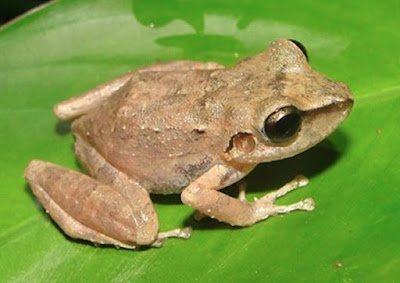Abstract
Pristimantis is the most diverse Neotropical genus of terrestrial vertebrates and is distributed from Central America to Argentina. The last few years have seen the description of several new species of the genus, suggesting that its diversity is still underestimated. After decades of uncertainties about the taxonomic status of populations of Pristimantis from the “Brejos de Altitude” of the state of Ceará, Northeast Brazil, we finally found morphological, acoustic and molecular evidence confirming their distinctiveness from other Atlantic Forest species. The new species is characterized by the following: shagreen dorsal skin with small-scattered tubercles, absence of dorsolateral fold, presence of tarsal fold, advertisement call composed of 1–8 pulsed notes, (2–5 pulses per note), and dominant frequency located in the second energy band, ranging from 3617–4220 Hz. Phylogenetic analysis placed the new species in the Pristimantis conspicillatus species group and the sister lineage of the Atlantic Forest clade comprising P. ramagii, P. paulodutrai and the P. vinhai species complex.
Keywords: Amphibia, Ceará state, Neotropics, systematics, taxonomy
 |
| adult female municipality of Guaramiranga |

Igor Joventino Roberto, Daniel Loebmann, Mariana L. Lyra, Céliof B. Haddad and Robson Waldemar Ávila. 2022. A New Species of Pristimantis Jiménez de la Espada, 1870 (Anura: Strabomantidae) from the “Brejos de Altitude” in Northeast Brazil. Zootaxa. 5100(4); 521-540. DOI: 10.11646/zootaxa.5100.4.4









